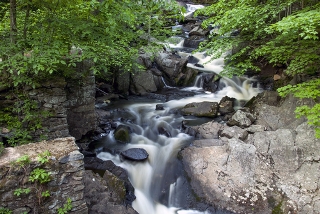We’re Sensing a Change in Water Monitoring: Introducing the Arsenic Sensor Prize Competition
By Lauren McAllister
Interested in helping protect our nation’s drinking water? EPA and the U.S. Bureau of Reclamation (USBR) are joining forces to launch the Arsenic Sensor Prize Competition for the development of new technology to detect arsenic in water.
 The Safe Drinking Water Act requires that public water systems monitor regulated contaminants in drinking water to ensure public safety. Arsenic, a naturally occurring element, is one of the many drinking water contaminants actively monitored by drinking water systems because it can result in adverse health conditions, including an increased risk for a range of cancers. Measuring and testing for arsenic requires expensive instruments and lab work, as well as time. However, with new and emerging technologies, a more efficient arsenic monitoring technology could help to improve the monitoring system, reduce costs, and better protect human health and the environment.
The Safe Drinking Water Act requires that public water systems monitor regulated contaminants in drinking water to ensure public safety. Arsenic, a naturally occurring element, is one of the many drinking water contaminants actively monitored by drinking water systems because it can result in adverse health conditions, including an increased risk for a range of cancers. Measuring and testing for arsenic requires expensive instruments and lab work, as well as time. However, with new and emerging technologies, a more efficient arsenic monitoring technology could help to improve the monitoring system, reduce costs, and better protect human health and the environment.
Typically, samples are sent to a laboratory for analysis, with results available days to weeks later. New technology could accelerate this process by allowing for immediate detection of arsenic in water. This could reduce monitoring costs and help water utilities more effectively control treatment to remove arsenic from the drinking water supply.
The Arsenic Sensor Prize Competition aims to improve the existing process with upcoming and emerging technology. The competition is not exclusively restricted to sensor developers, but seeks applicants from all fields. Applicant criteria includes anyone with ideas for how to rapidly, accurately, and cost-effectively measure arsenic in water.
The first phase of the Arsenic Sensor Prize Competition is scheduled to be launched in fall 2016. Entries will be judged and cash prizes will be awarded to winners. If you are interested in receiving notifications about the Arsenic Sensor Prize Competition, email PRIZE@usbr.gov with “Arsenic Sensor Prize Competition” in the subject line to join the email list. The official prize competition announcement will be posted on Challenge.gov.
About the Author: Lauren McAllister is an Oak Ridge Associated Universities contractor with the Innovation Team in EPA’s Office of Research and Development.








